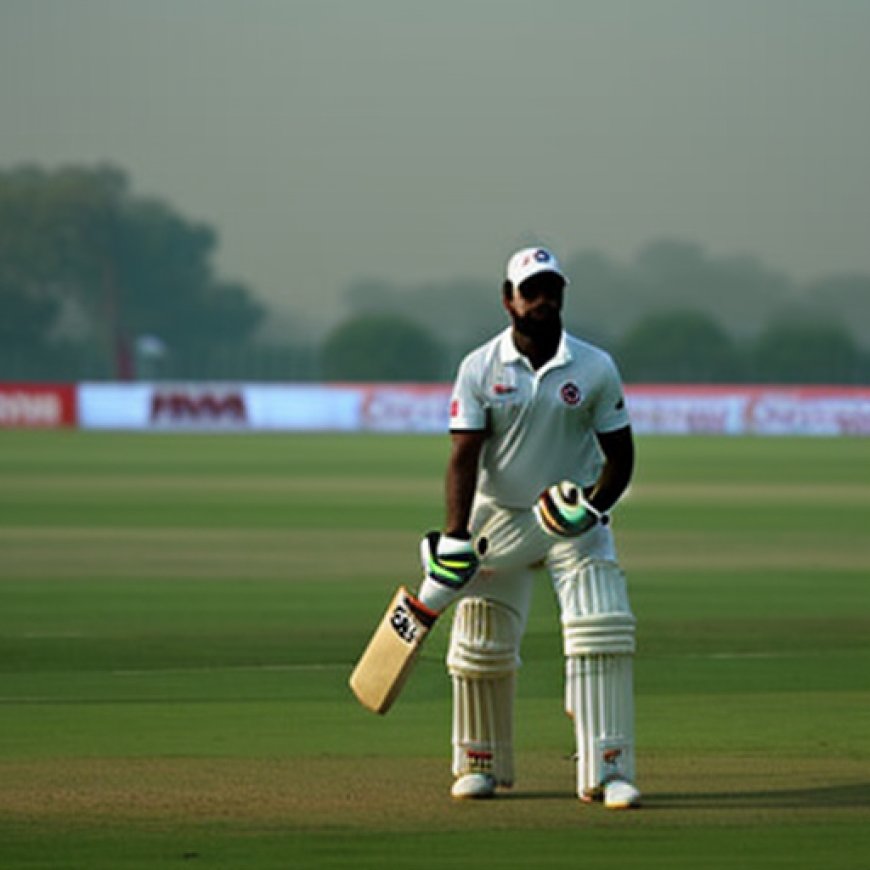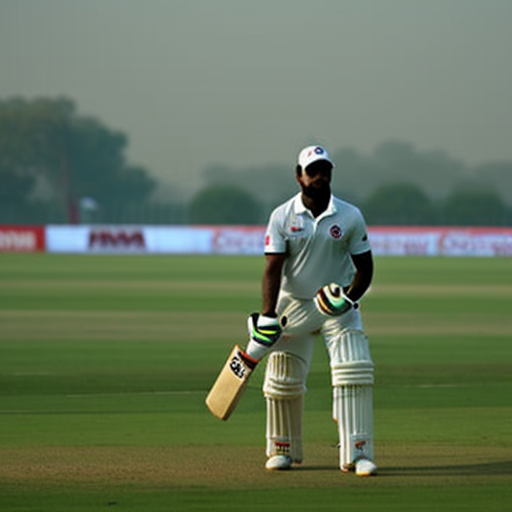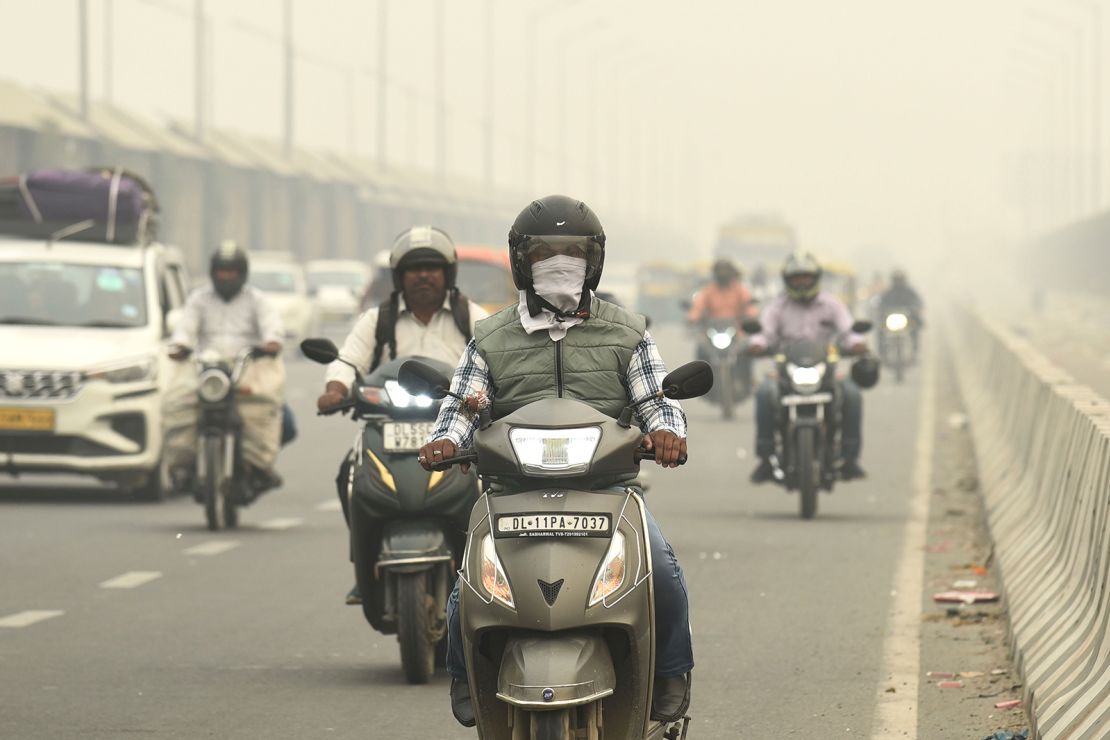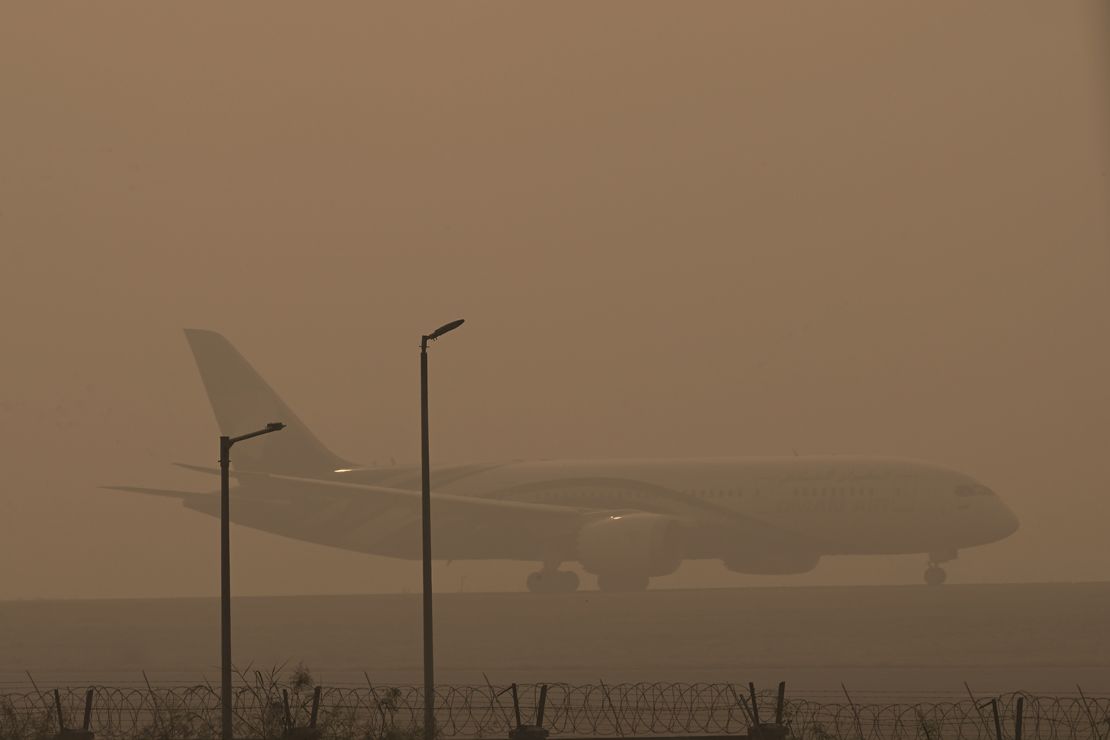Choking New Delhi smog shutters schools and shrouds Cricket World Cup | CNN
Choking New Delhi smog shutters schools and shrouds Cricket World Cup CNN


Sustainable Development Goals and the Pollution Crisis in New Delhi
Introduction
- A throat-searing blanket of smog has enveloped New Delhi, forcing schools to shut and disrupting the Cricket World Cup as officials rush to contain a pollution crisis that has become an annual occurrence in the Indian capital.
- Residents express their concerns about the worsening air quality and the impact it has on their health and daily lives.
Pollution Crisis in New Delhi
- The city’s air quality declined last week after colder temperatures trapped particles from surrounding crop burning, creating a toxic haze that reached hazardous levels for the fourth consecutive day on Monday.
- New Delhi started the week with a PM 2.5 concentration nearly 80 times the World Health Organization’s recommended limit.
- PM 2.5 particles include pollutants such as sulfate, nitrates, and black carbon, which can impair cognitive and immune functions and have links to lung and heart disorders.

Impact on Cricket World Cup
- The pollution has threatened the ongoing Cricket World Cup, with Sri Lanka canceling their training session due to the hazardous air quality.
- To ease conditions, India’s cricket board announced a ban on firework displays for the remaining matches of the tournament.
Emergency Measures and Public Response
- Authorities are implementing emergency measures, including halting non-essential truck movement and construction work, as well as sprinkling water on the roads to reduce dust levels.
- Worried residents are rushing to buy air purifiers and following doctors’ advice to remain indoors to avoid exposure to the toxic fumes.
- Residents express their concerns about the government’s response and call for stricter regulations to curtail pollution levels.
Nobody Spared
- India has long struggled with its smog problem, affecting both urban centers and agricultural areas.
- New Delhi, home to more than 20 million people, is often ranked among the world’s most polluted cities.
- A 2021 study by the Energy Policy Institute at the University of Chicago (EPIC) found that bad air could reduce the life expectancy of Delhi residents by as much as nine years.
- Every single one of India’s 1.4 billion residents endures annual average pollution levels that exceed WHO guidelines.

Government Efforts and Fossil Fuel Dependency
- In 2019, the central government announced a national clean air campaign with the aim to reduce particulate pollution by up to 30% by 2024.
- Specific plans were created for each city, including measures to reduce road traffic, burn-offs, and road dust, and to encourage the use of cleaner fuels.
- However, India’s pollution problem has worsened in recent years, partly due to the country’s dependency on fossil fuels.
Health Impact and Vulnerable Populations
- Doctors report an increase in pollution-related illnesses, including cough, throat irritation, shortness of breath, and skin problems.
- High pollution levels spare nobody, but the most vulnerable population includes people with lung diseases like asthma, bronchitis, and lung damage.
CNN’s Vedika Sud and Sania Farooqui contributed reporting from New Delhi.
SDGs, Targets, and Indicators
1. Which SDGs are addressed or connected to the issues highlighted in the article?
- SDG 3: Good Health and Well-being
- SDG 11: Sustainable Cities and Communities
- SDG 13: Climate Action
2. What specific targets under those SDGs can be identified based on the article’s content?
- SDG 3.9: By 2030, substantially reduce the number of deaths and illnesses from hazardous chemicals and air, water, and soil pollution and contamination.
- SDG 11.6: By 2030, reduce the adverse per capita environmental impact of cities, including by paying special attention to air quality and municipal and other waste management.
- SDG 13.1: Strengthen resilience and adaptive capacity to climate-related hazards and natural disasters in all countries.
3. Are there any indicators mentioned or implied in the article that can be used to measure progress towards the identified targets?
- PM 2.5 concentration levels: The article mentions that New Delhi’s PM 2.5 concentration was nearly 80 times the World Health Organization’s recommended limit. This indicator can be used to measure progress towards SDG 3.9.
- Average pollution levels: The article states that every single one of India’s 1.4 billion residents endure annual average pollution levels that exceed guidelines set by WHO. This indicator can be used to measure progress towards SDG 3.9.
- Air quality index: The article mentions that the city’s air quality reached hazardous levels for the fourth consecutive day. The air quality index can be used as an indicator to measure progress towards SDG 11.6.
- Reduction in particulate pollution: The article mentions India’s national clean air campaign, which aims to reduce particulate pollution by up to 30% by 2024. This reduction can be used as an indicator to measure progress towards SDG 11.6.
SDGs, Targets, and Indicators Table
| SDGs | Targets | Indicators |
|---|---|---|
| SDG 3: Good Health and Well-being | 3.9: By 2030, substantially reduce the number of deaths and illnesses from hazardous chemicals and air, water, and soil pollution and contamination. | – PM 2.5 concentration levels – Average pollution levels |
| SDG 11: Sustainable Cities and Communities | 11.6: By 2030, reduce the adverse per capita environmental impact of cities, including by paying special attention to air quality and municipal and other waste management. | – Air quality index – Reduction in particulate pollution |
| SDG 13: Climate Action | 13.1: Strengthen resilience and adaptive capacity to climate-related hazards and natural disasters in all countries. | N/A |
Behold! This splendid article springs forth from the wellspring of knowledge, shaped by a wondrous proprietary AI technology that delved into a vast ocean of data, illuminating the path towards the Sustainable Development Goals. Remember that all rights are reserved by SDG Investors LLC, empowering us to champion progress together.
Source: cnn.com

Join us, as fellow seekers of change, on a transformative journey at https://sdgtalks.ai/welcome, where you can become a member and actively contribute to shaping a brighter future.







